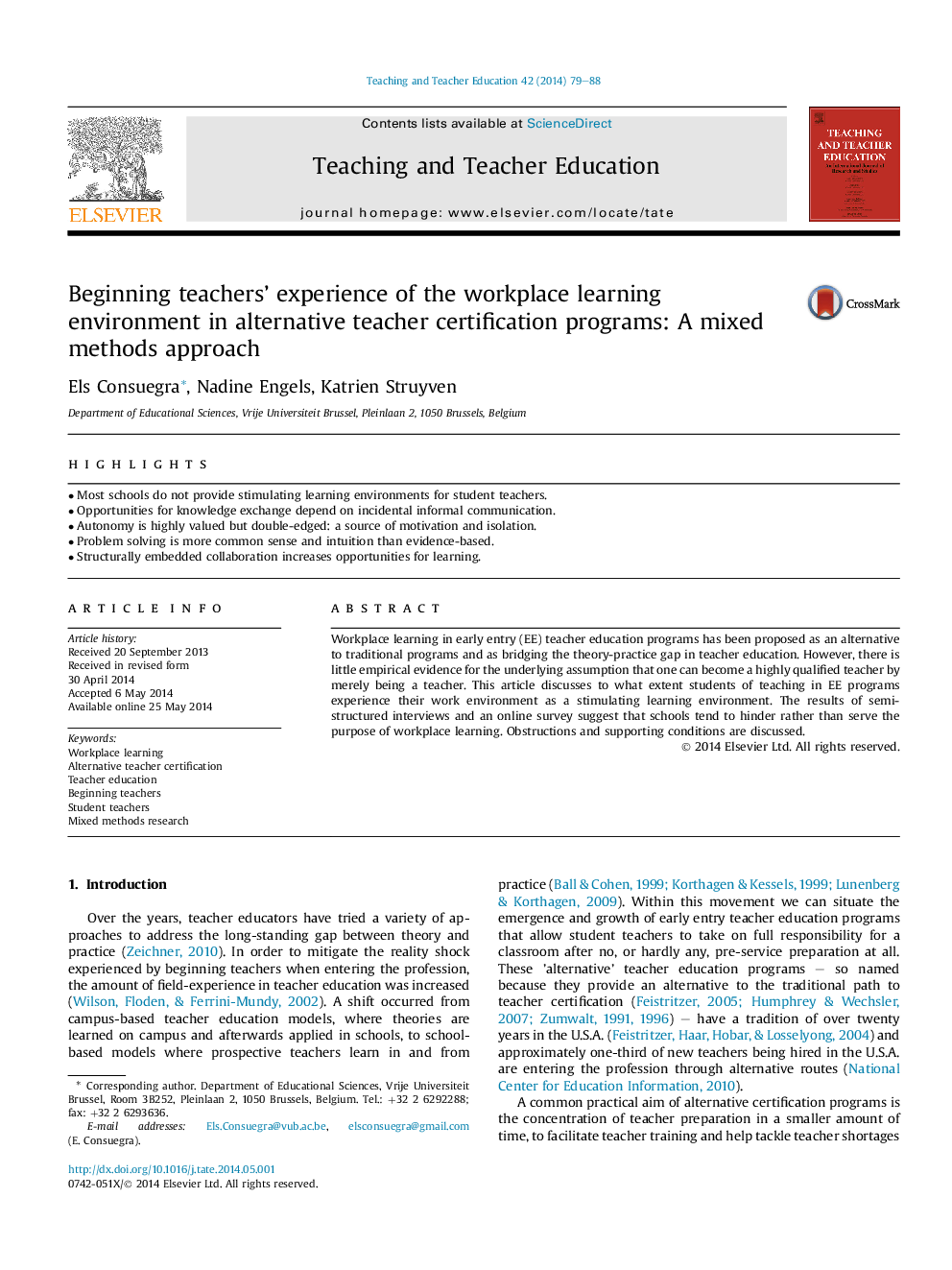| Article ID | Journal | Published Year | Pages | File Type |
|---|---|---|---|---|
| 373950 | Teaching and Teacher Education | 2014 | 10 Pages |
•Most schools do not provide stimulating learning environments for student teachers.•Opportunities for knowledge exchange depend on incidental informal communication.•Autonomy is highly valued but double-edged: a source of motivation and isolation.•Problem solving is more common sense and intuition than evidence-based.•Structurally embedded collaboration increases opportunities for learning.
Workplace learning in early entry (EE) teacher education programs has been proposed as an alternative to traditional programs and as bridging the theory-practice gap in teacher education. However, there is little empirical evidence for the underlying assumption that one can become a highly qualified teacher by merely being a teacher. This article discusses to what extent students of teaching in EE programs experience their work environment as a stimulating learning environment. The results of semi-structured interviews and an online survey suggest that schools tend to hinder rather than serve the purpose of workplace learning. Obstructions and supporting conditions are discussed.
